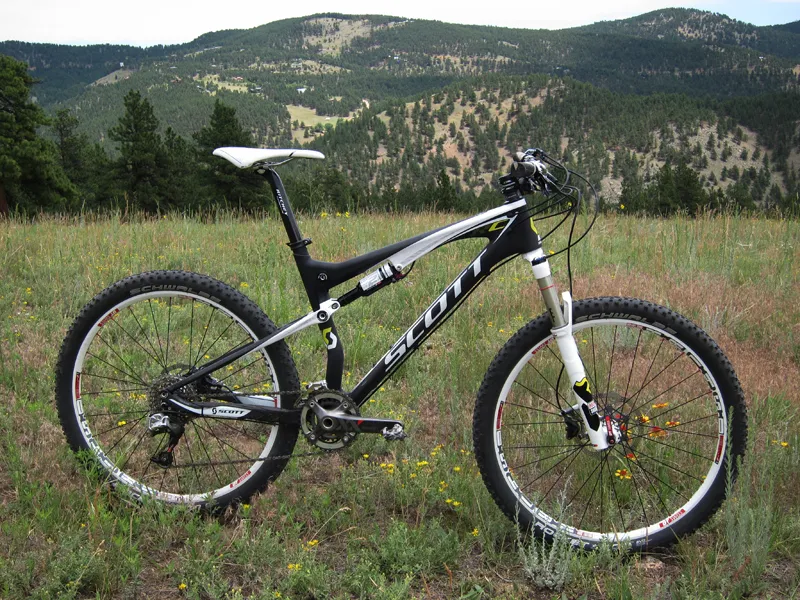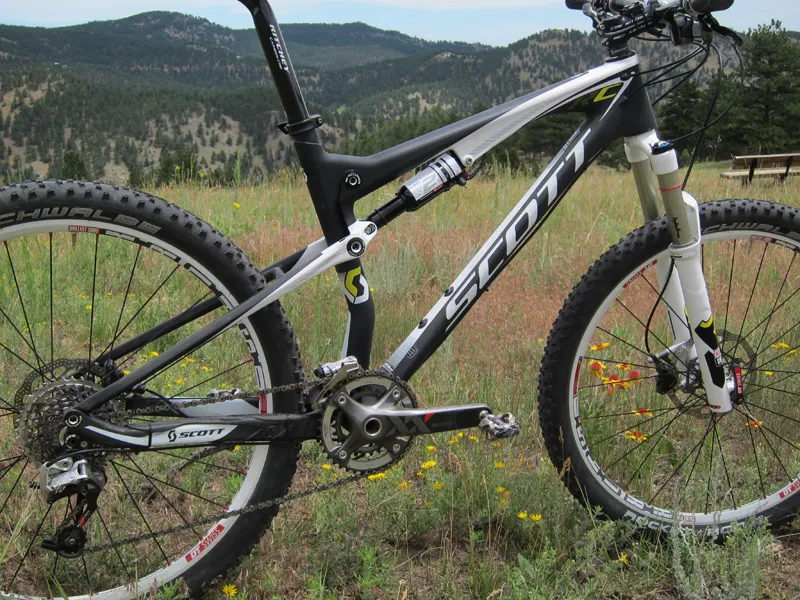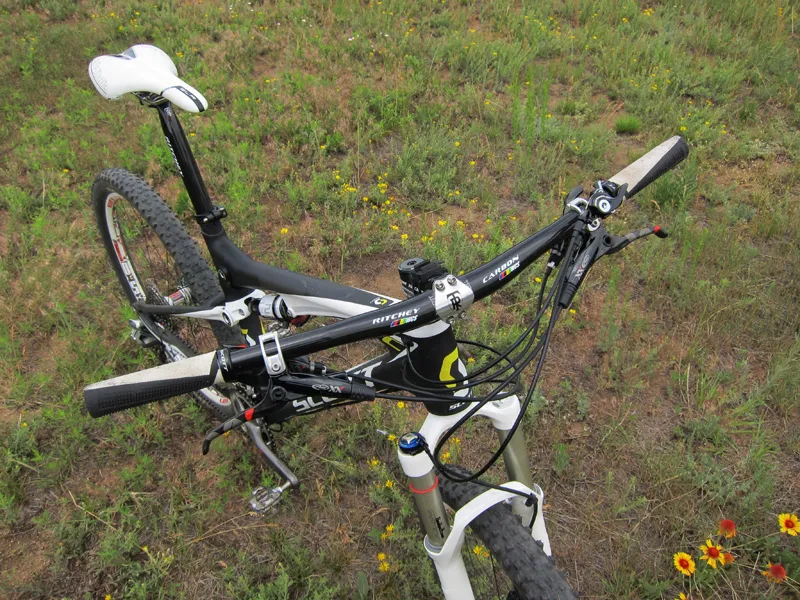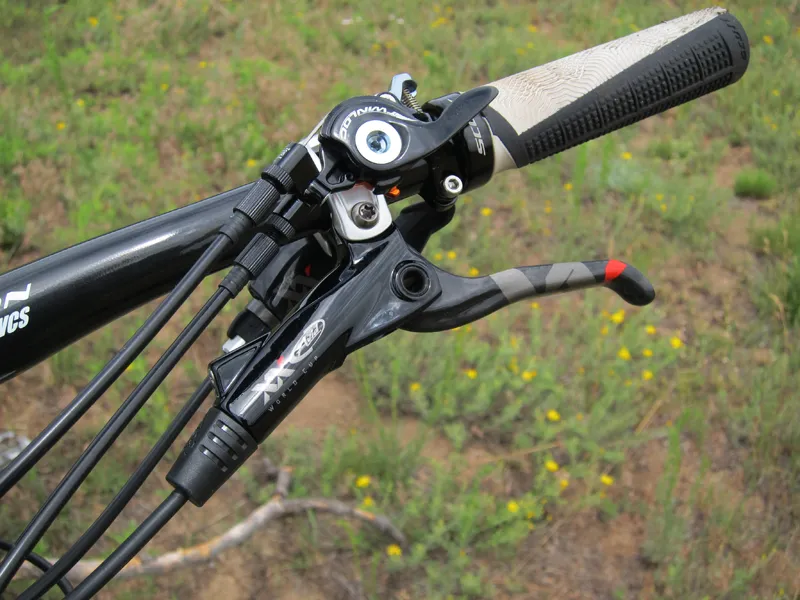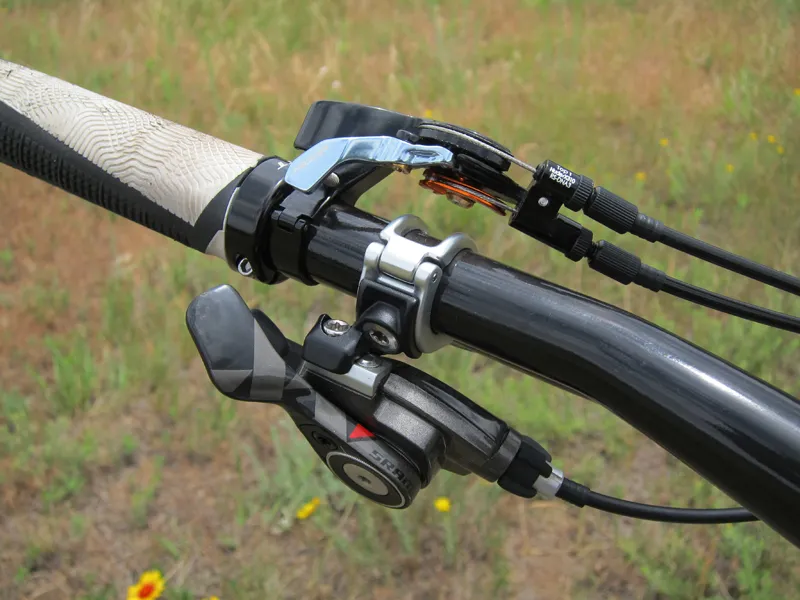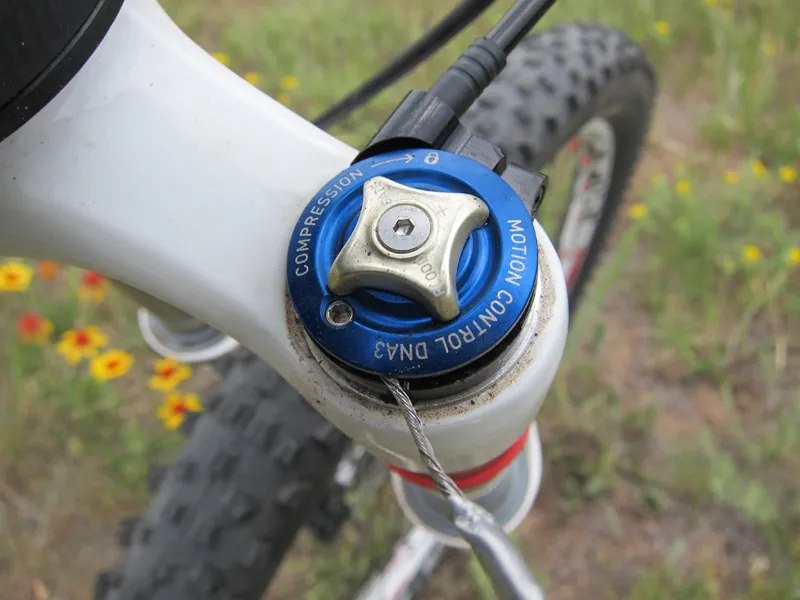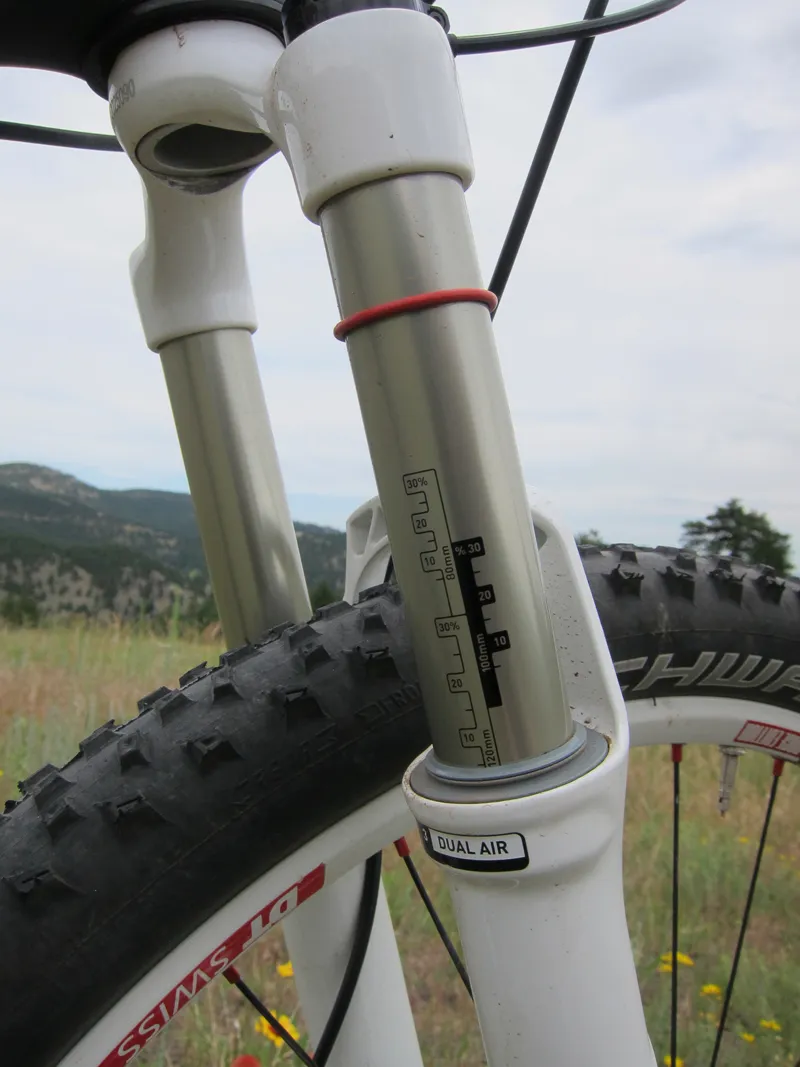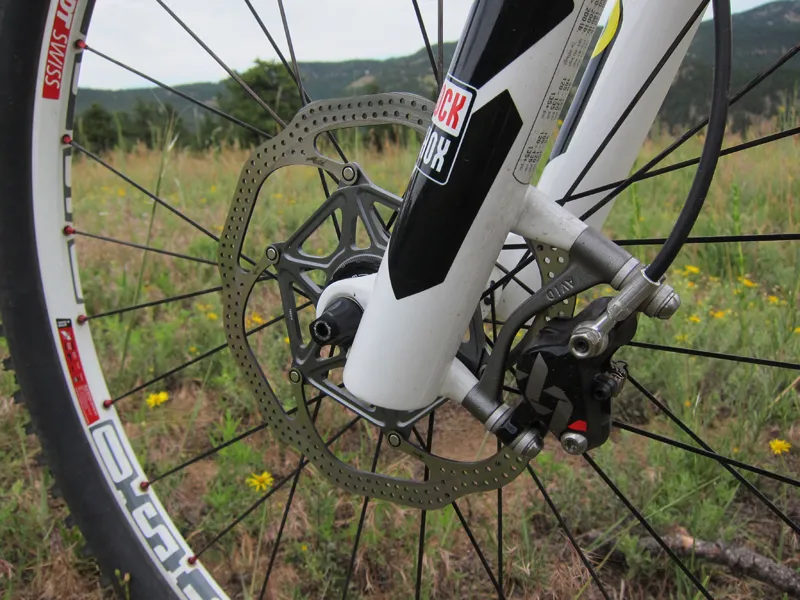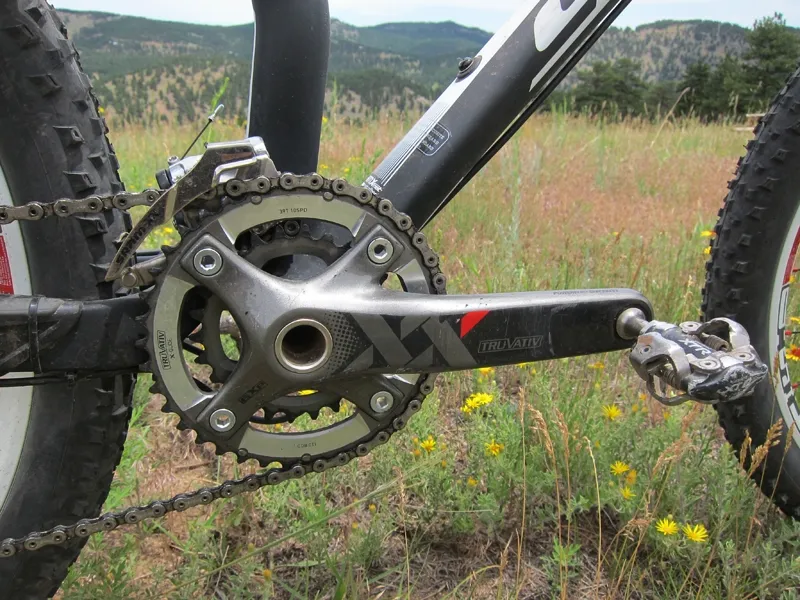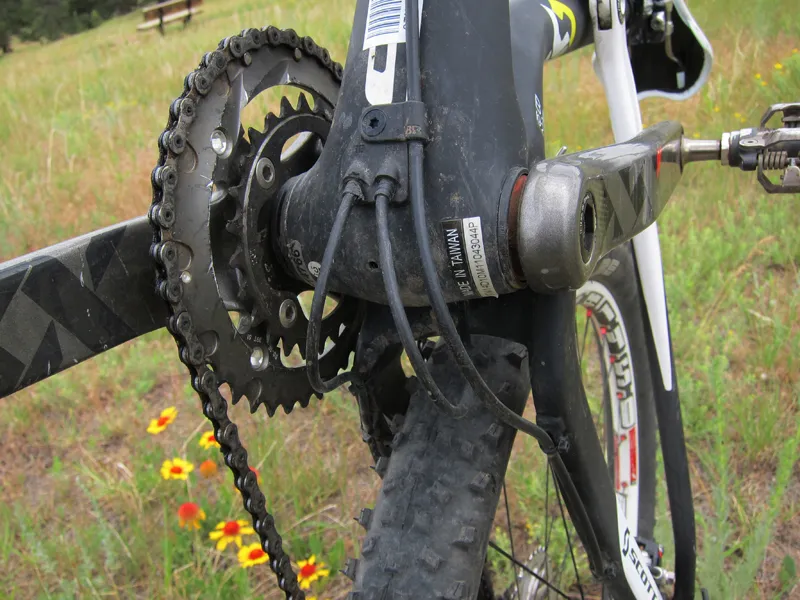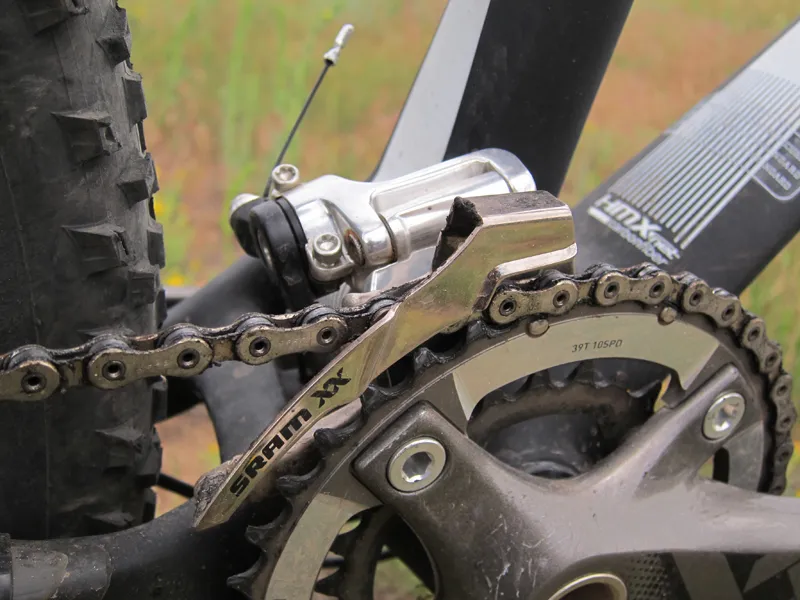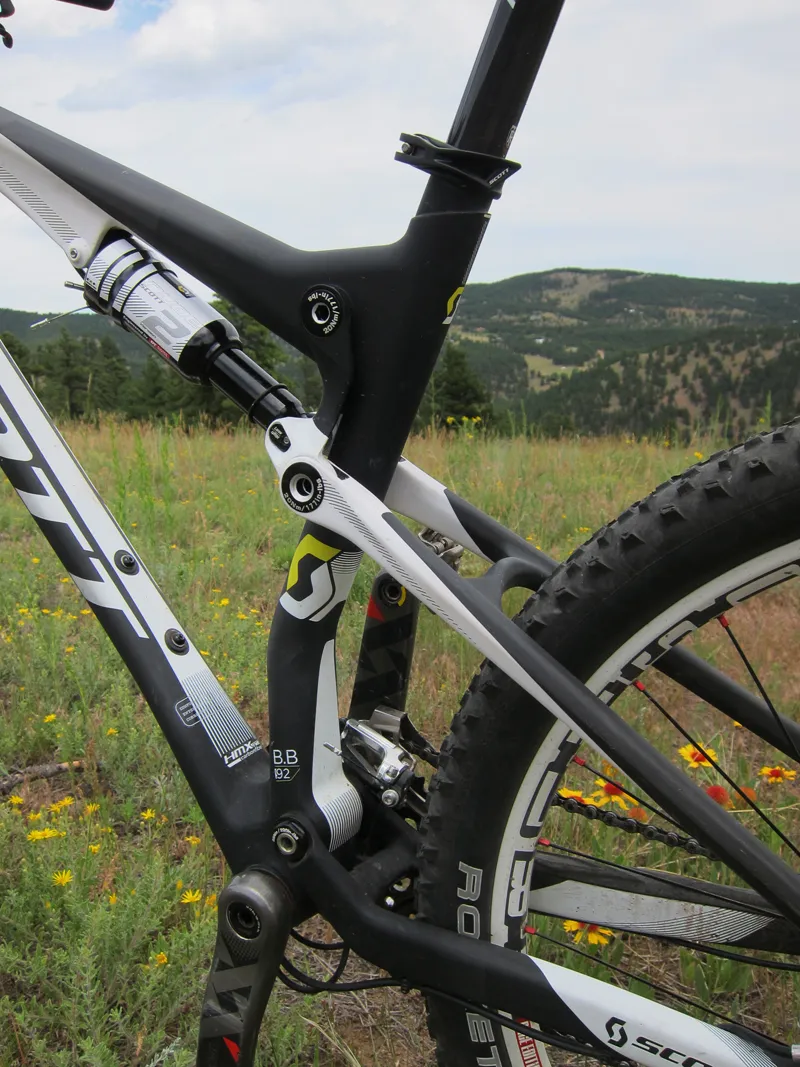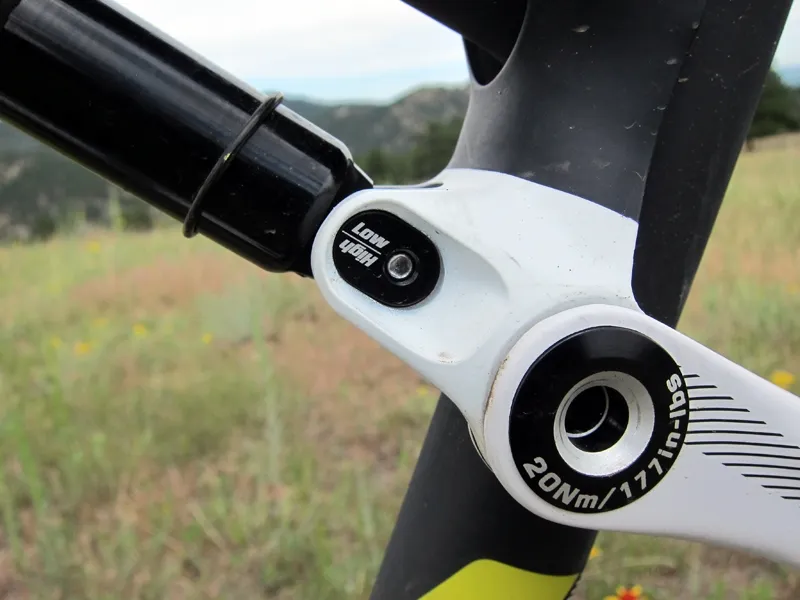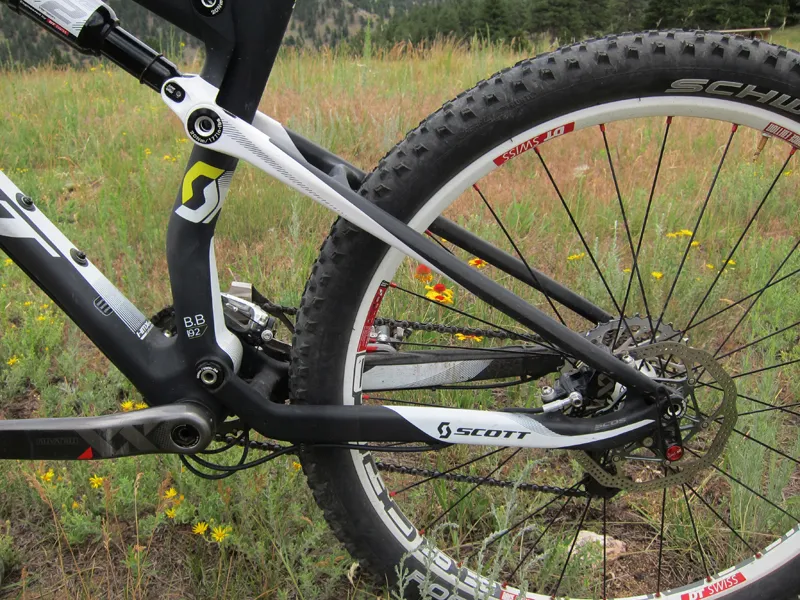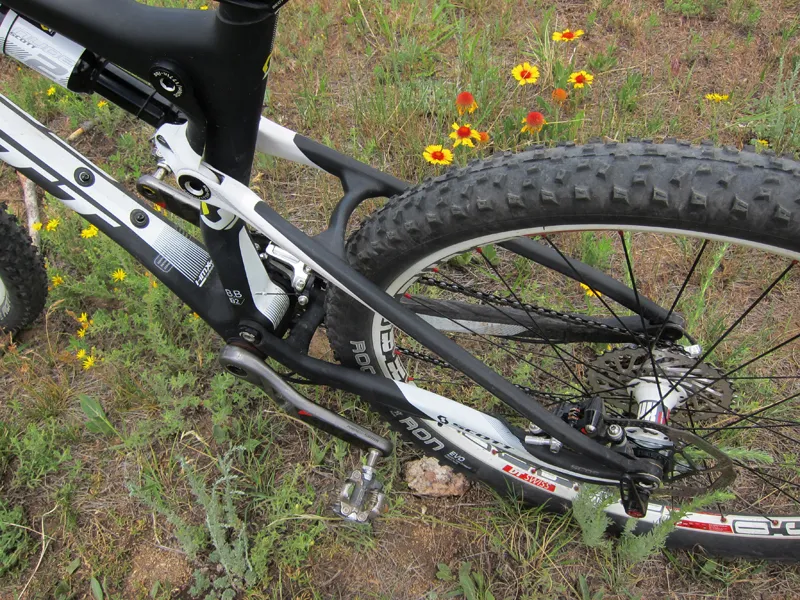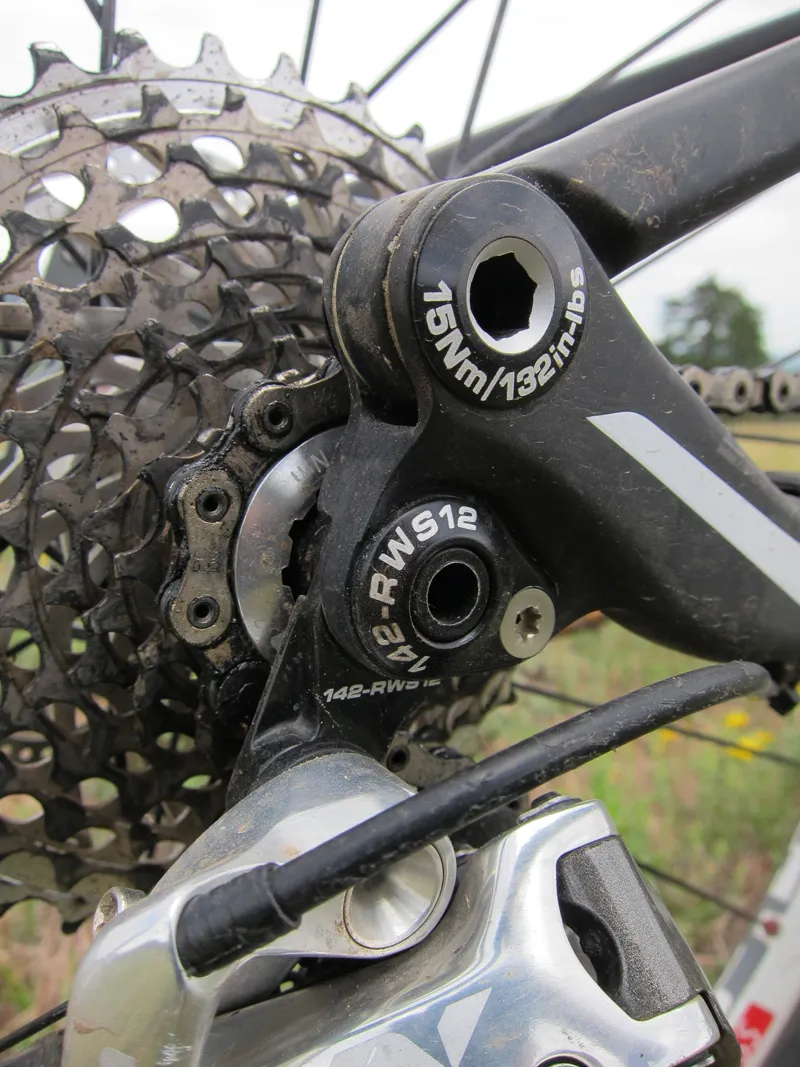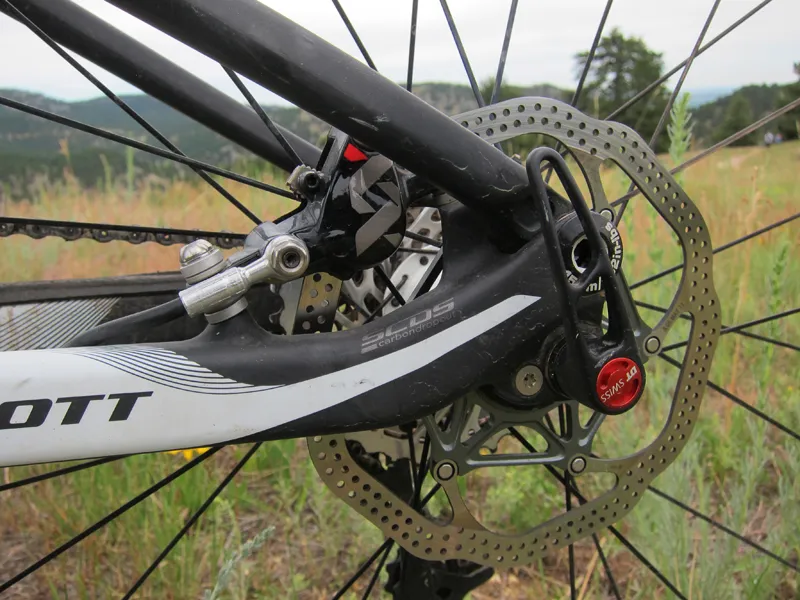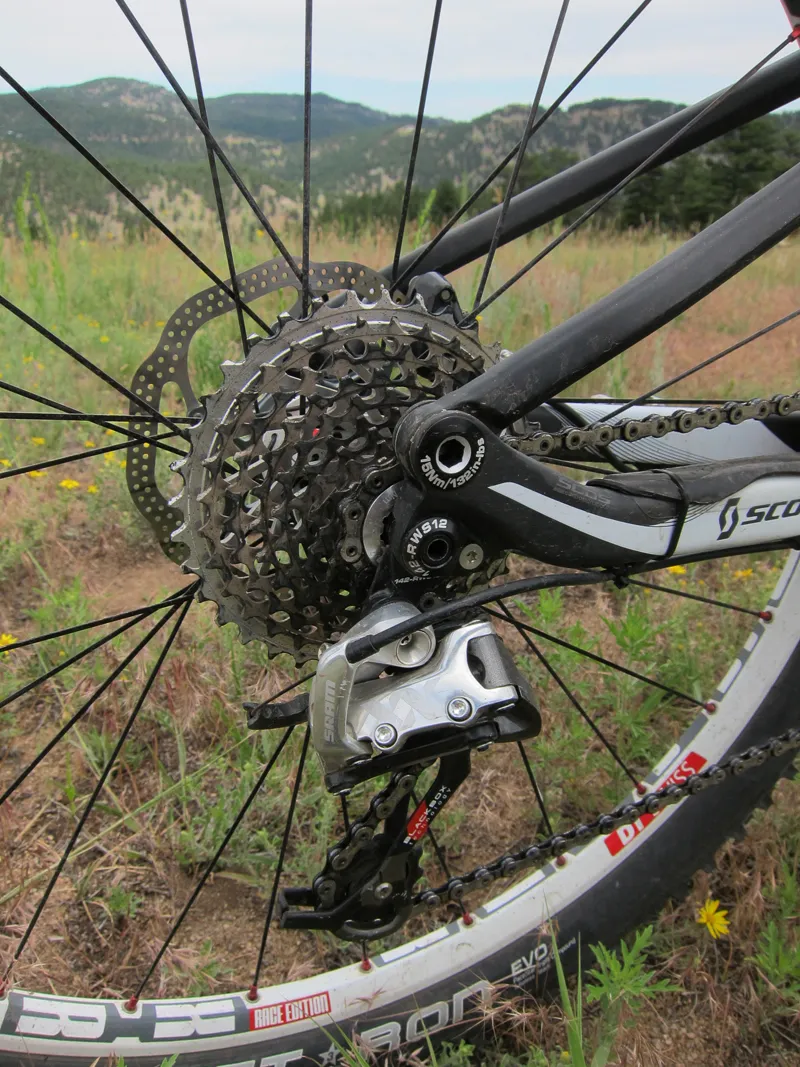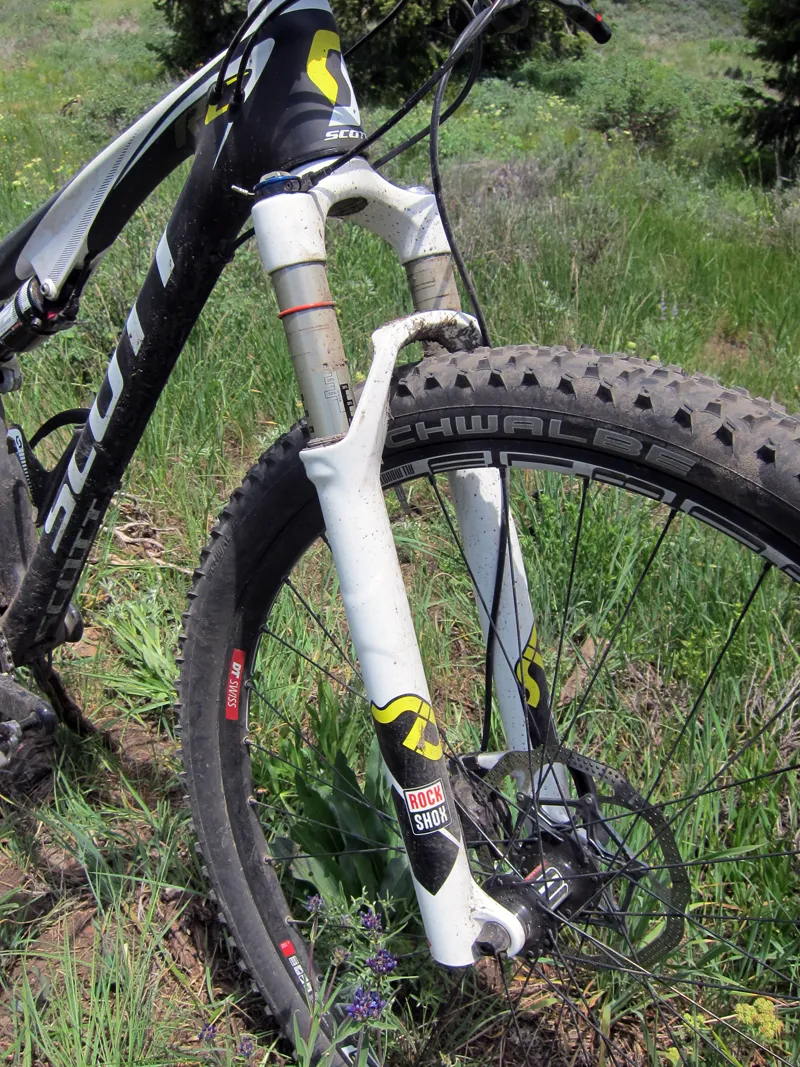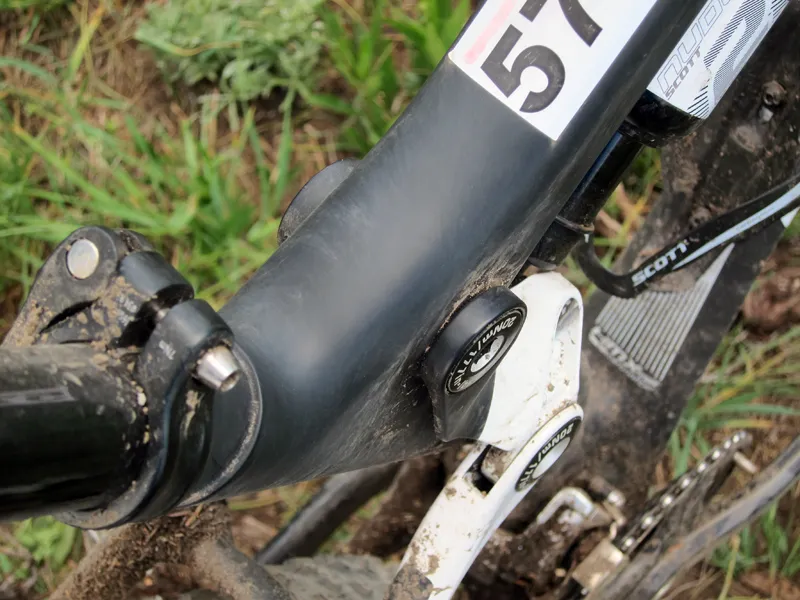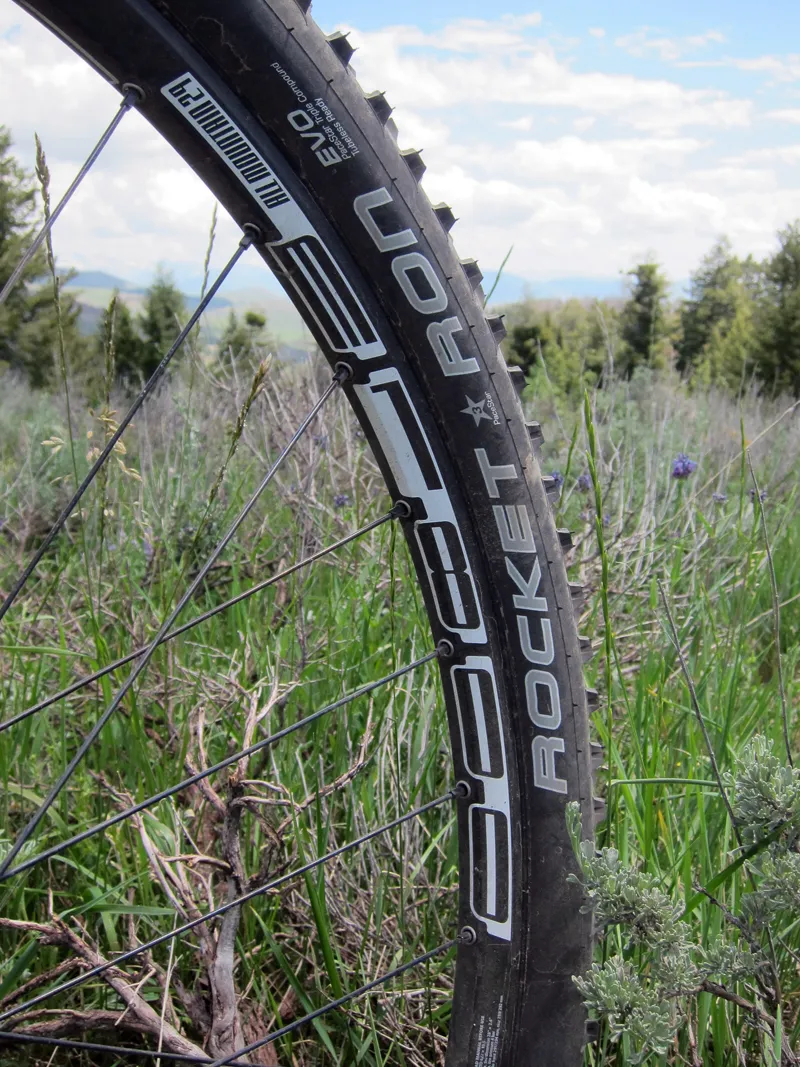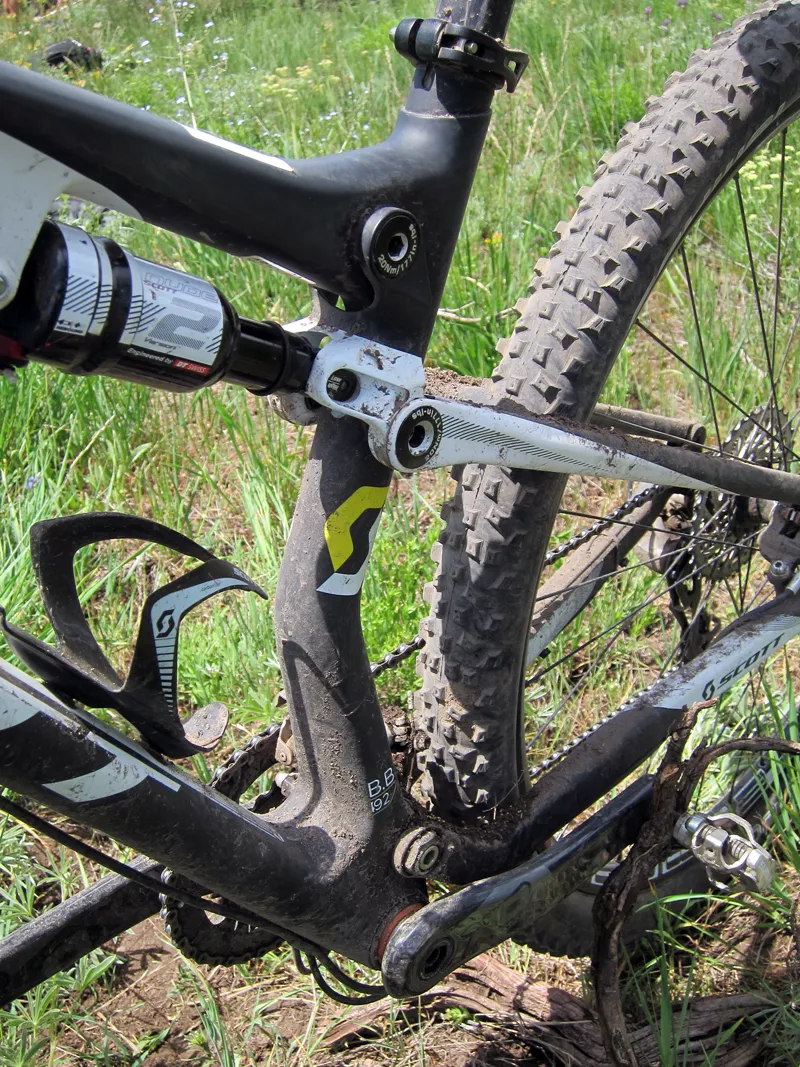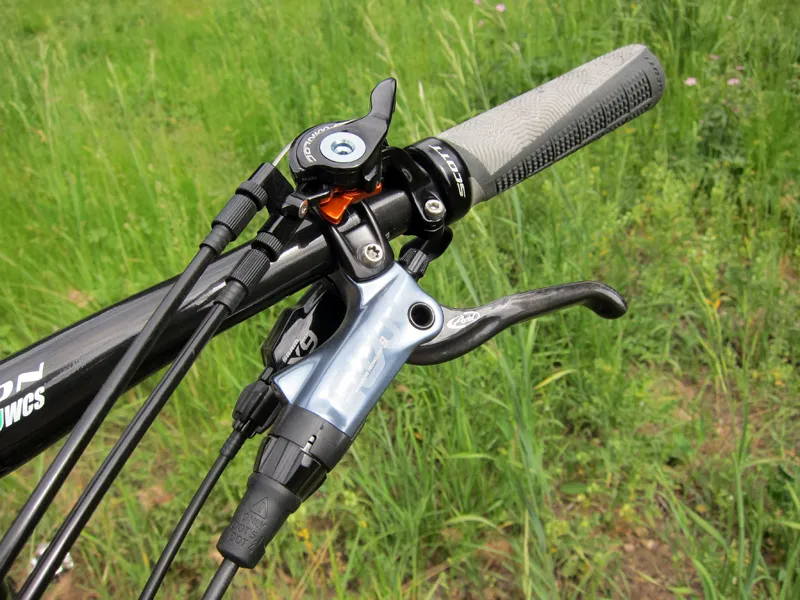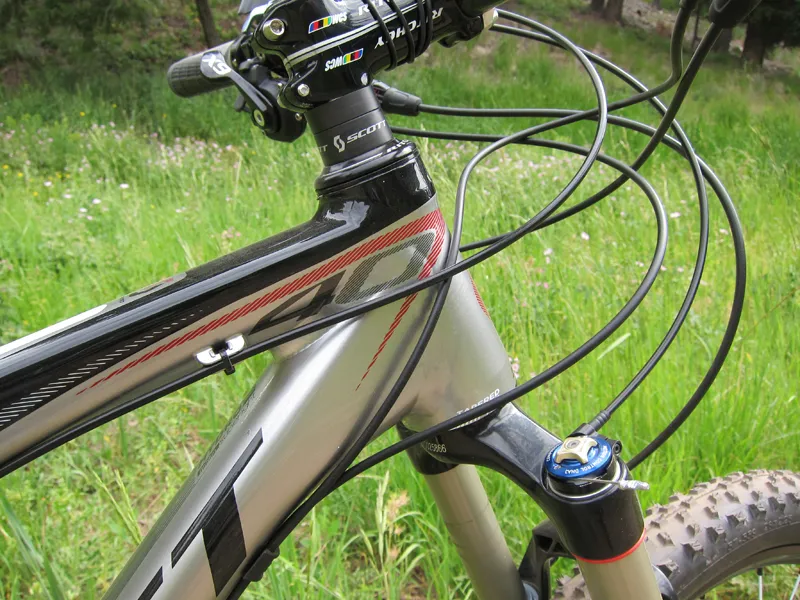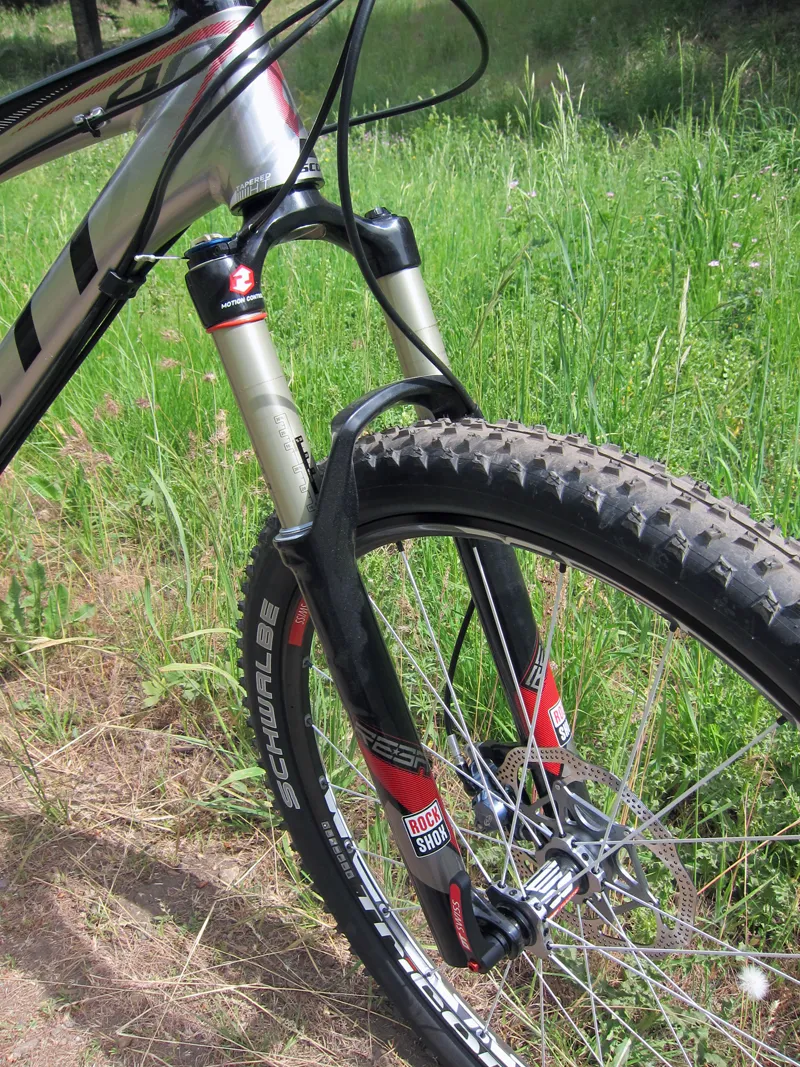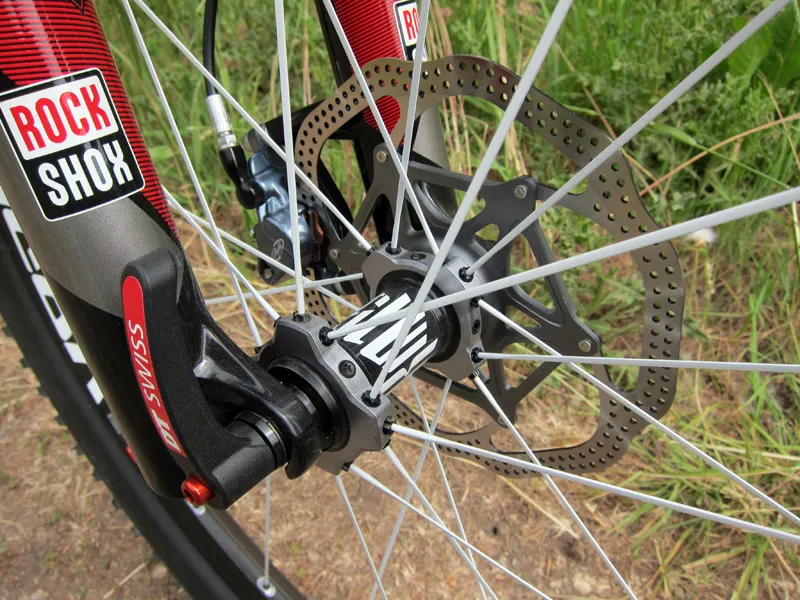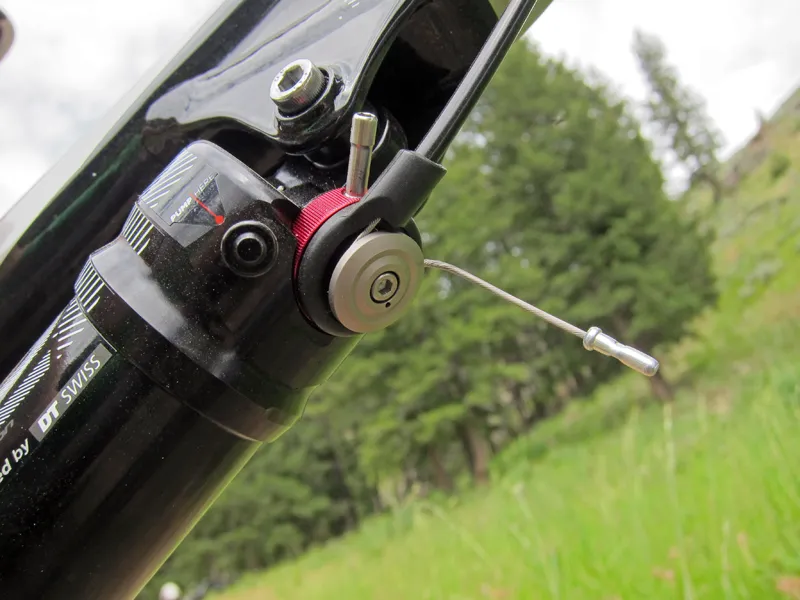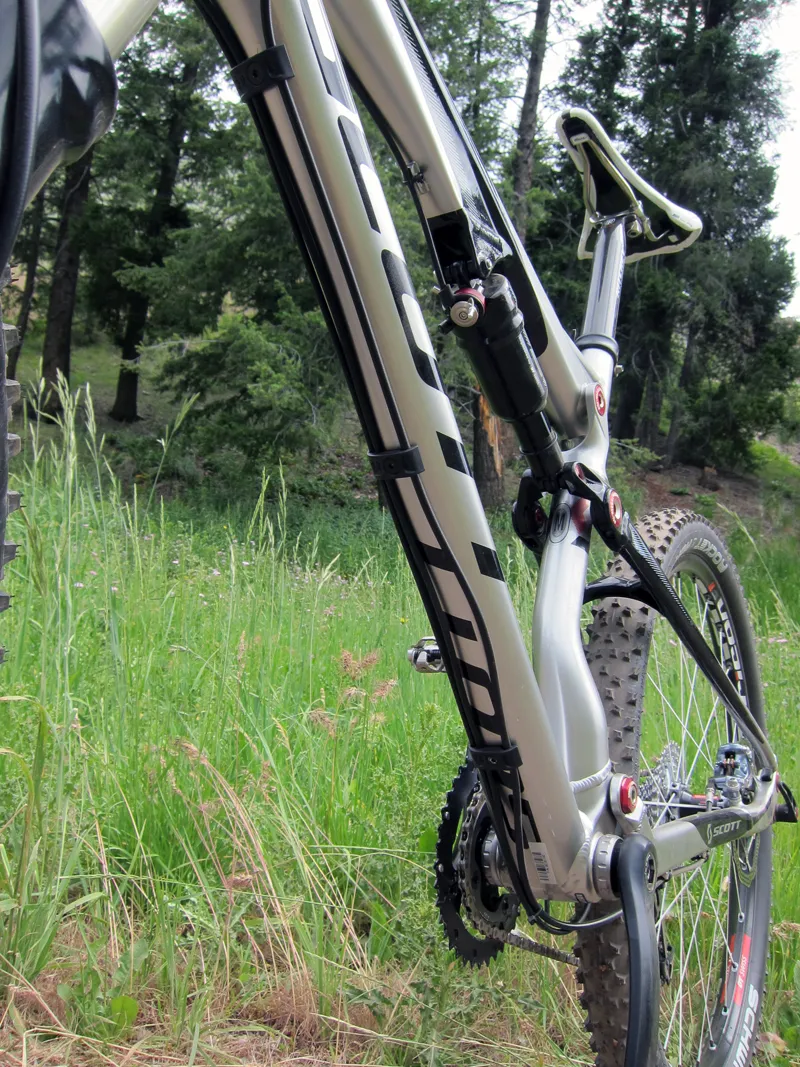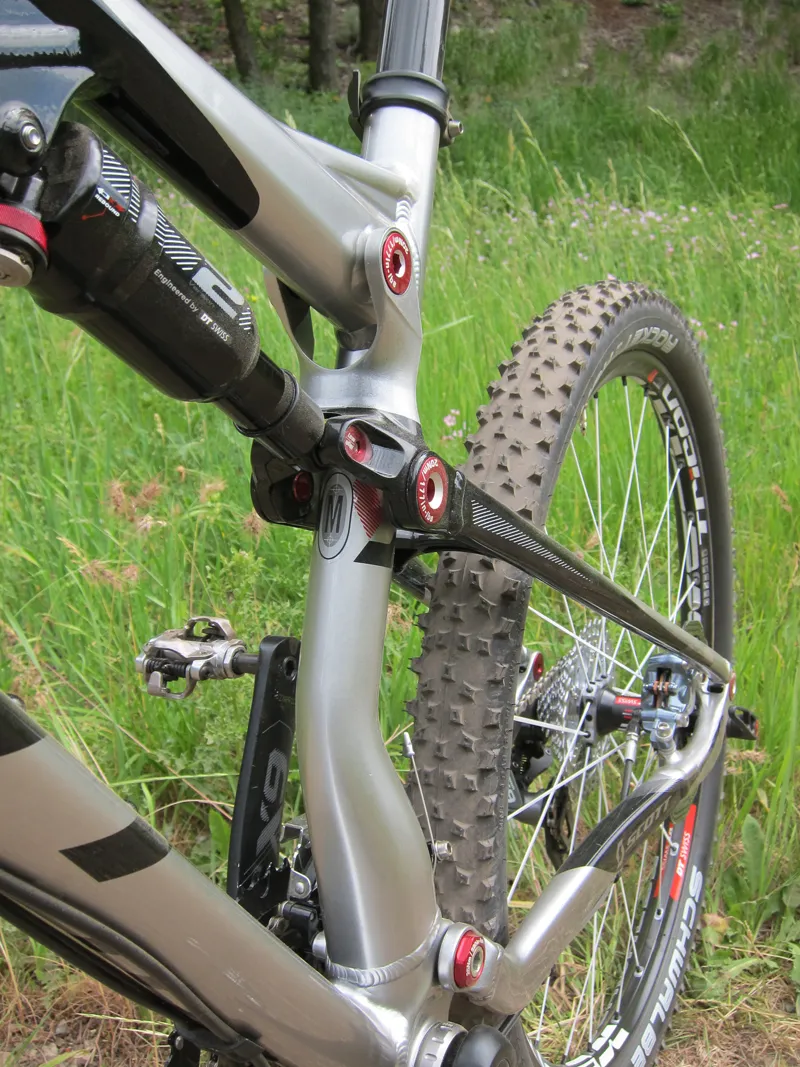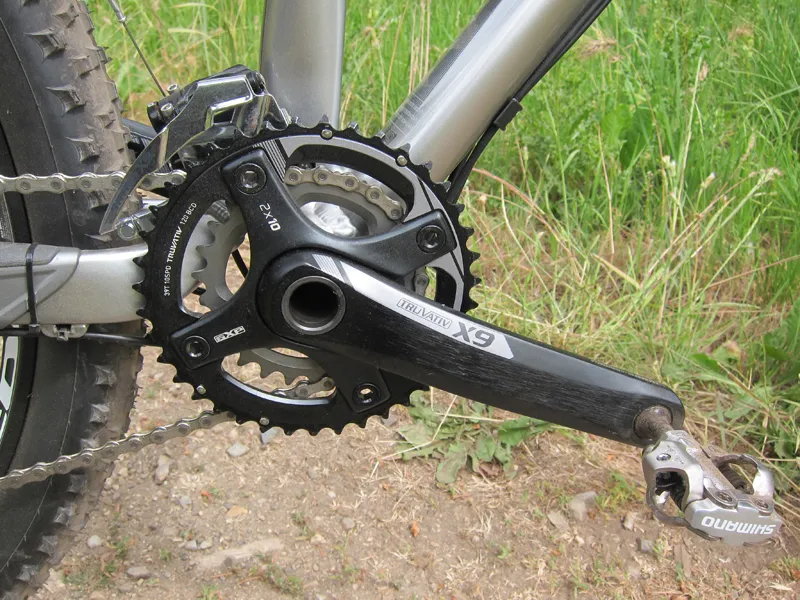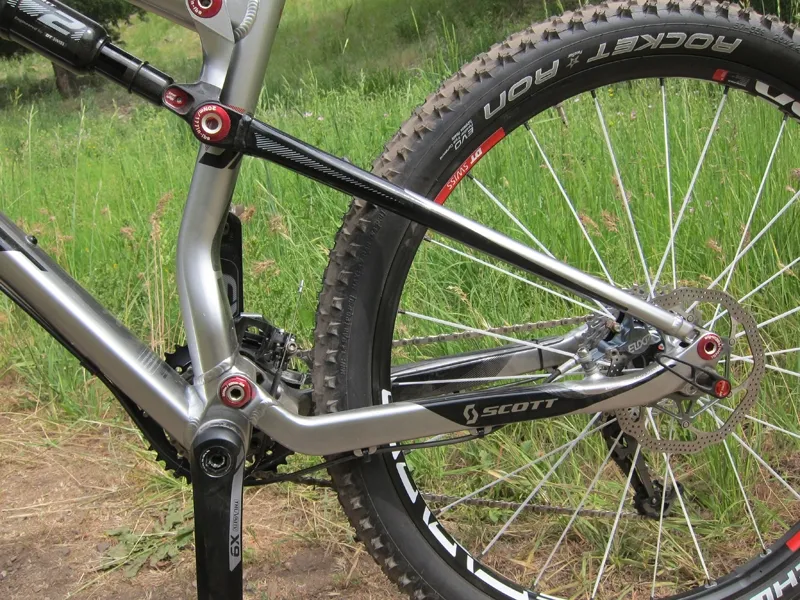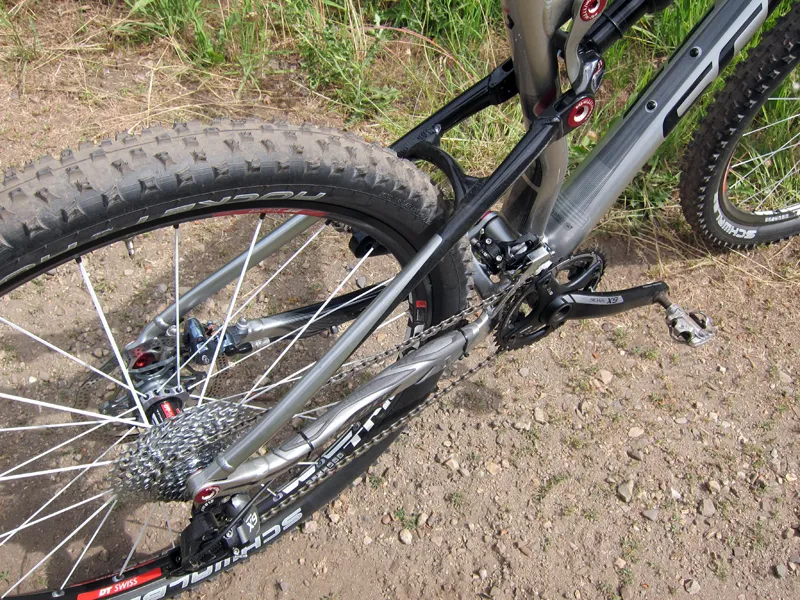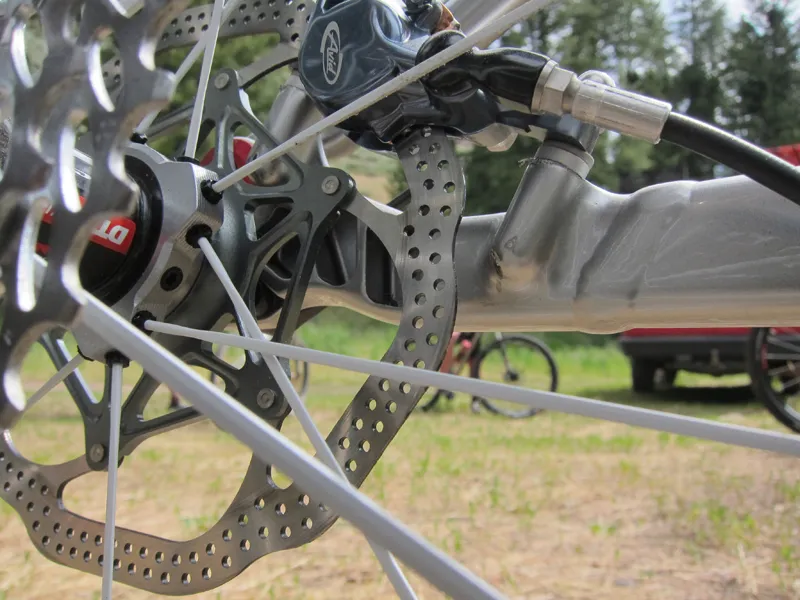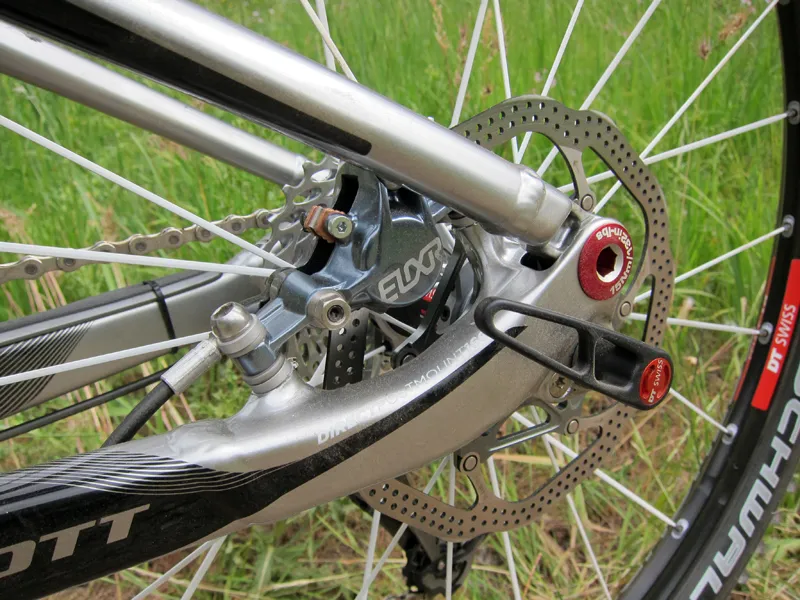Scott's new range of Spark full-suspension bikes is no longer aimed solely at cross-country racers. While later first-generation models sprouted longer forks and more trail-friendly componentry, this second-generation Spark is a more progressive machine straight from the get-go in terms of travel, geometry and versatility.
The family has grown, too, to 11 26in-wheeled models (seven carbon fiber, four aluminum) ranging from US$1,500-10,000 and six all-new 29in models (three carbon, three aluminum) from $1,650-6,500.
We spent four days riding the new bikes around Scott's Sun Valley, Idaho US headquarters (plus an extra few weeks beforehand on a preproduction carbon 26in model on local trails) and walked away with a good impression of what potential buyers will see later this year: much improved suspension performance, surprisingly speed-friendly handling and a cleaner, more modern aesthetic.
Suspension: Trick TwinLoc feature across the board but your thumbs will be very busy
The personality of every 2012 Spark is overwhelmingly defined by the TwinLoc user-selectable suspension settings, operated by a trick bar-mounted lever that simultaneously controls the rear shock and front fork. Upper-end models like the ones we rode can be switched on-the-fly between 120, 85 and 0mm of travel on 26in bikes and 100, 70 and 0mm on 29in versions – both using a new DT Swiss Nude 2 rear shock built just for Scott (lower-end bikes get a two-mode open/lockout switch instead).
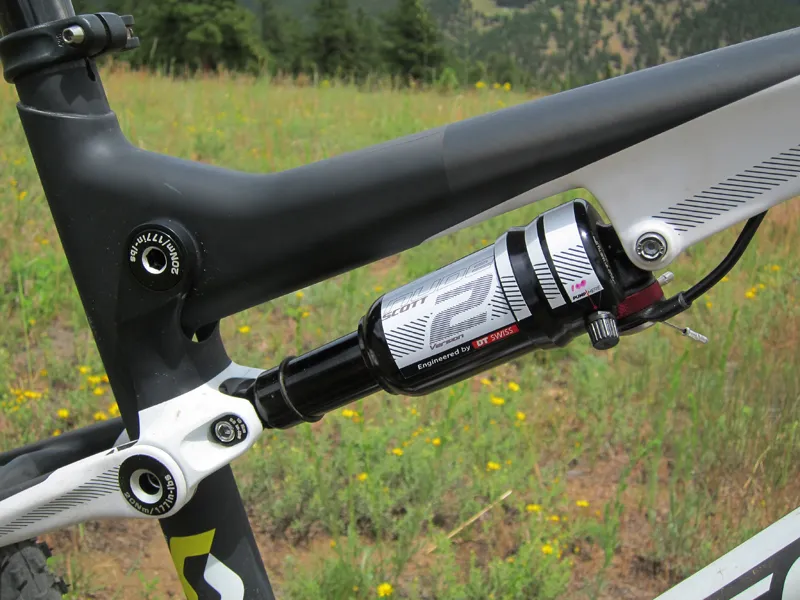
The new DT Swiss Nude 2 shock is a big improvement over the original Nude
Suspension performance in full-travel mode is significantly improved, with lower breakaway thresholds as compared to the original Nude shock and a more smoothly progressive spring rate afterward. As a result, the new Spark is better at flattening out high-frequency trail chatter, the rear end no longer wallows in the mid-stroke as the old machine was occasionally prone to do, and in general it's easier to use the suspension to gain speed out of corners than before.
Flipping the TwinLoc switch into traction mode yields a more dramatic change than in years past. DT Swiss have managed to tuck the original Nude shock's external secondary air chamber into the main body of the Nude 2 for a more compact form factor and better bottle clearance but the end result is the same. Traction mode seals off the smaller chamber and produces a firmer and much more sharply progressive spring rate that effectively shortens the travel and also raises the sag point – something we very much appreciated during the countless long uphill grinds round Sun Valley.
Higher-end Sparks also get a new semi-analogous system on the matching RockShox fork, with full open, platform and lockout modes on the custom DNA3 compression damper. Just as with the rear end, traction mode restricts oil flow to stiffen things up and while there's no change to the air spring in this case, the end result is the same – a much firmer platform with decreased travel that's very resistant to movement for a more efficient feel.
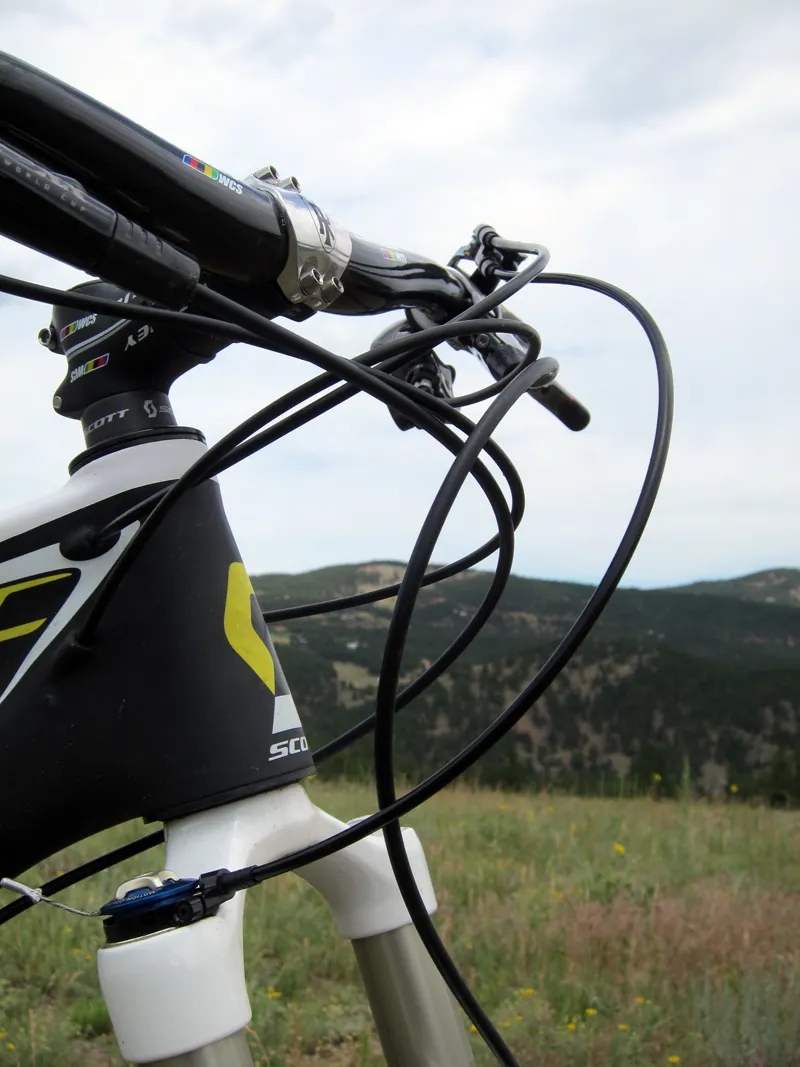
Scott's TwinLoc remote works as advertised but it also produces a cluttered mass of cables up front
Ironically, though, both ends firm up so much with traction mode engaged that traction is actually decreased, in particular on technical climbs. This middle setting now seals off the bypass port in the Nude 2's compression piston, forcing all the oil to move through the shim stack and making the rear suspension much firmer in this mode than any old Spark ever was. Likewise, it restricts oil flow in the custom RockShox DNA3 damper (the air chamber isn't affected up front but shunting the oil flow still yields similar reductions in effective travel), whereas the old Spark left the fork free to move.
As a result, traction mode doesn't leave much movement for smaller trail obstacles that can disrupt your rhythm or bump you off line. Riders can dial back the FloodGate adjuster to soften things back up but this softens things up in full lockout mode, too. We'd rather Scott kept the old traction mode settings that cut down on rear travel but otherwise left both dampers free to operate as needed (or at least something that doesn't restrict the oil flow quite as much as it does).
Just as you'd expect, the lockout position does just that with a rock-solid feel out back – great for long, smooth climbs or road sections on the way to the trailhead. The RockShox fork adds the familiar FloodGate blowoff threshold adjuster to help fine-tune the ride but there's nothing similar out back. The Nude2 shock will move when locked out if you hit something hard enough but it's a somewhat harsh event that finishes with a clunk at top-out.
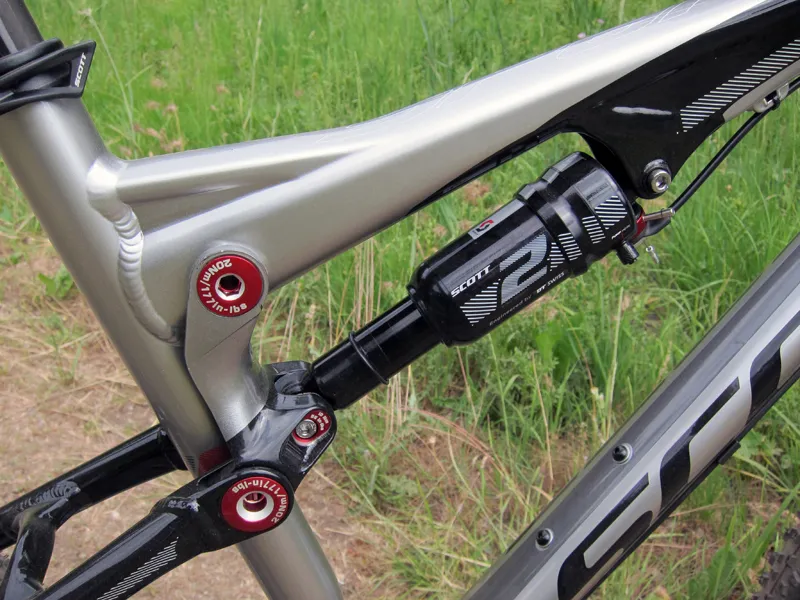
The new DT Swiss Nude 2 rear shock and forged one-piece aluminum link yield a much cleaner look than in years past
Overall, Scott's TracLoc system is admirable in its ambition: like a car with a manual transmission, it doesn't try to do any of the thinking for you and instead provides riders with full control over how the back end behaves. Each mode works as intended for the most part, but to expand on the automobile analogy, it's a little like driving a compact car with a small motor – you have to row the gearbox a lot to extract the most performance and you'll definitely pay a price if you're not in the right gear.
Moreover, the advent of two-ring drivetrains has prompted Scott to lower the main pivot by approximately 10mm – roughly in line with the inner chainring – for better pedaling efficiency on steeper climbs. Seated climbing in the inner ring with the rear shock fully open yields good (but not great) pedaling response but when hammering in the big ring, the new Spark answers with pronounced rear-end squat and lots of monkey motion, especially on short power climbs that require 10 or 20 strong strokes to crest a rise. So yes, TwinLoc works as advertised but new Spark riders will likely find themselves using it a lot – maybe more than they'd like.
The Nude2 shock that lies at the heart of the 2012 Spark's revamped suspension system is also its biggest handicap. There's no platform-type valving, no complex damping circuits to handle more complicated trail situations, and while small bump sensitivity is worlds better than the old Nude, it still feels well behind the latest technology from Fox Racing Shox or RockShox. The three modes are nice and all but ultimately, we were hoping for a little more up-to-date technology in each setting. As it is, the Nude 2 still feels a little old-school in execution. Scott's collaboration with DT Swiss goes back a long way and though that relationship may still be cozy, we can't help but feel it's time to cut the cord and move on to someone with more to offer.
Frame: Stiffer carbon models, impressively advanced alloy ones
The Nude2 shock's underwhelming performance mars what is otherwise an eager and high-performing chassis – at least in promise (more on that in a bit). Frame geometry is remarkably progressive for what's supposed to be Scott's flagship cross-country racer. All models feature a two-position linkage mount for adjustable geometry and in either case, it's notably slacker than standard: 68-68.7° for the 26in Spark and roughly a degree steeper for 29ers. Bottom brackets are quite low, too.
Fans of point-and-shoot riding styles will have to adjust their reflexes a touch in twisty sections of trail but the upside is outstanding stability at very high speed. Suspension pivot points have been beefed up across the board, with bigger shaft diameters and newly outboard bearings. Shock linkage width has decreased for much improved knee clearance and it's now a one-piece forged aluminum bit instead of the old bolt-together unit that's far cleaner and sleeker looking.
There's also a newly tapered head tube, better top tube clearance across the board, direct-mount front derailleurs that attach to the swingarm yoke, and – finally – a more standard 31.6mm seatpost diameter instead of the old proprietary 34.9mm one. Carbon frames also get a wider all-carbon bottom bracket with press-fit cups and a true one-piece molded front triangle instead of the molded-plus-tube-to-tube construction of Spark v1.0.

Press-fit bottom bracket cups on the new carbon fiber Scott Spark frame allow for a very wide down tube and less weight as there are no longer any aluminum inserts required for threaded cups
All complete Sparks get increasingly popular 142x12mm through-axle rear ends for stiffness but they can also be converted to standard 135mm quick-release or 135x12mm through-axle standards. In total, Scott are claiming a fantastic 60 percent boost in stiffness over the old Spark for carbon models, all at the same 1,790g weight for a medium frame and shock.
The emphasis is on "claim" here, though, as our preproduction carbon samples didn’t quite back up those numbers. In fact, the 26in one felt strangely soft and the 29in one, while very good, wasn't the big improvement over the current Spark that we were expecting. Our preproduction medium 26in carbon tester was also a touch overweight at 1,990g, though that figure included the bulky quick-release seatpost collar, rear derailleur hanger, front derailleur mounting stub and water bottle bolts.
Scott US marketing and PR director Adrian Montgomery confirmed our findings, saying that these early test samples weren't built with the company's final carbon layup schedules and were much softer than they should be. We've been promised a production bike in August so we're hopeful that the claimed numbers hold true, particularly since if they're correct, the new carbon Spark frame should be fantastic in terms of structure given the laundry list of features and Scott's proven track record with composite structures.
On a positive note, the alloy versions we tried were very impressive. We don't have actual frame weights to report but stiffness felt better than our out-of-spec carbon samples and roughly on par with current carbon Sparks. Aside from the extra frame weight, the alloy version will undoubtedly be better value.
Equipment: Scott take a confusing stance on through-axles
Our test bikes were equipped with non-standard build kits so we won't dwell much on the performance of those components. Regardless, a few trends are worth discussing. First off, all of the Sparks are impressively light.
The top-end 26in-wheeled Spark RC is just 9.84kg (21.69lb) with DT Swiss Tricon 1450 wheels, SRAM XX and a RockShox SID RLT3 fork (medium frame, without pedals); the Spark 29 RC is an excellent 11.04kg (24.34lb) with wider trail-friendly DT Swiss wheels, SRAM XX and a RockShox SID 29 RLT3; an alloy 26in Spark is 11.52kg (25.4lb) with SRAM X9, DT Swiss XM 1550 Tricon wheels and a RockShox Reba; and a similarly equipped alloy 29in Spark is 12.05kg (26.57lb).
Scott have championed through-axles out back but strangely, all Sparks will use quick-release dropouts up front. According to Montgomery, Scott's European bigwigs decided that the Spark's expected competition-oriented audience would already have a fleet of race wheels at their disposal that they wouldn't be too keen to retire. They apparently also made the argument that quick-release wheels are faster to change.
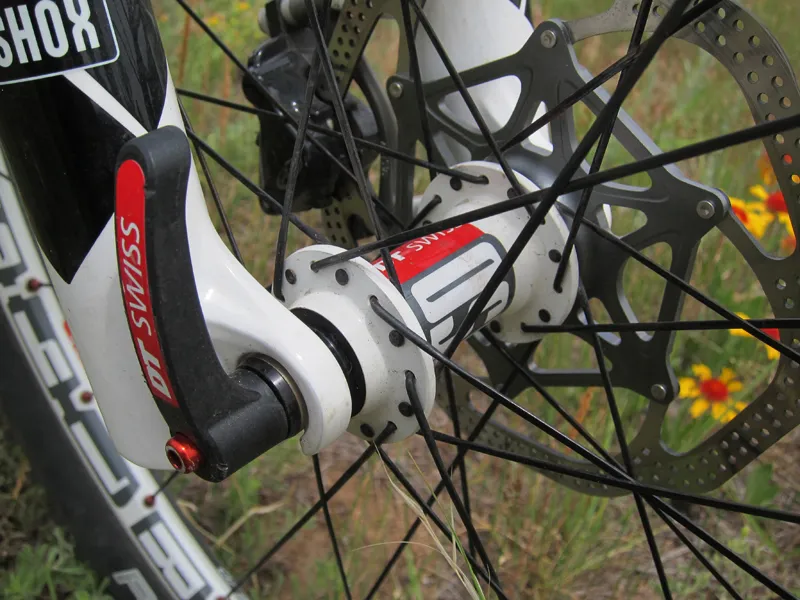
All 2012 Scott Sparks stick with quick-release fork tips instead of the increasingly popular – and notably stiffer – through-axle setups
The spare wheel argument holds some merit, but Scott contradict themselves by going with a through-axle out back – and one that's frustrating slow to change at that. Sure, the rear dropouts can be converted but those bits aren't included with complete bikes and you'll end up with an unusable stock rear wheel. More importantly, the open-dropout forks are noticeably flexier than their through-axle counterparts so Scott are making a significant performance compromise.
In contrast, the Scale 29 RC carbon hardtail we tested a few months ago does have a through-axle fork – and the steering was fantastic partially as a result of that. Speaking of 29ers, Sun Valley's abundance of long, grinding climbs highlighted another issue: the standard 2x10 gearing. The 26x36-tooth bailout works just fine for most folks with 26in wheels but there's no ratio adjustment for the 29er version's greater rollout. This is perhaps more a SRAM issue than a Scott one, though, as the top-end XX crank isn't currently offered with the more 29er-specific ratios of the second-tier X0.
Overall: Promise – but not quite the delivery yet – of a brand-new day
Our early assessment of Scott's new Spark platform is clearly a little mixed. All signs point to big improvements over the predecessor and in many cases that's true: the geometry is fantastic, the frame includes all the latest bells and whistles, it's still crazy-light, and while this is purely subjective, we think the new look is a huge step in the right direction.
Ultimately our frustrations come from the fact that there's so much potential here that we feel is disappointingly held back by a stubborn allegiance to a shock that's rife with bells and whistles but just doesn't feel as good as its more advanced competitors.
We've still got our fingers crossed for the proper full-production tester coming in a few weeks and we'll see if our opinions change on more familiar home soil with location-specific rubber. Rest assured, we'll be swapping out the Nude 2 at some point for something we feel is more appropriate for what the frame potentially has to offer. There's greatness hidden in here – we can almost taste it .

New to the 2012 Scott Spark range is a highly anticipated range of 29ers, including the top-end Spark 29 RC that features an ultralight carbon frame and an enviable mix of componentry
